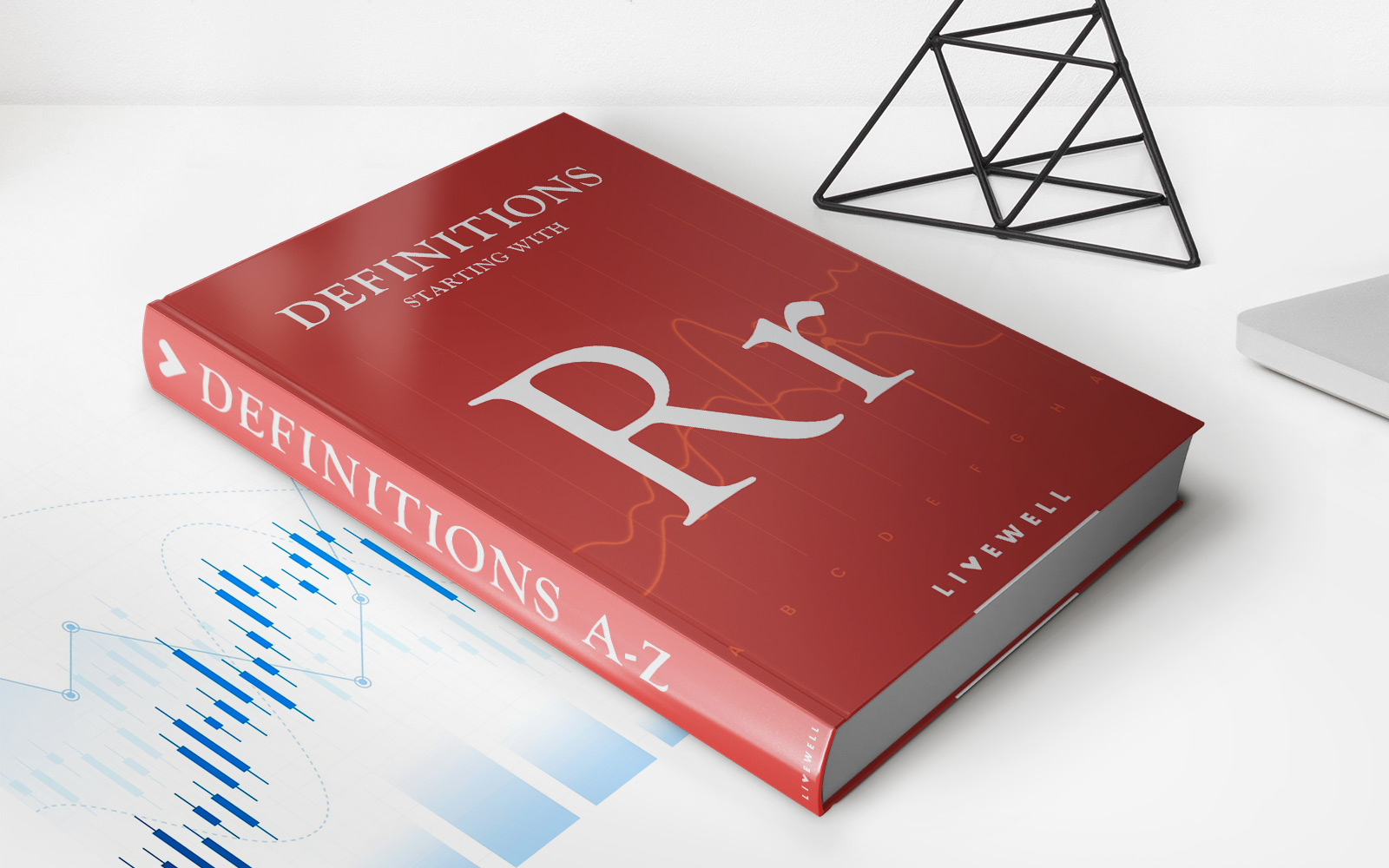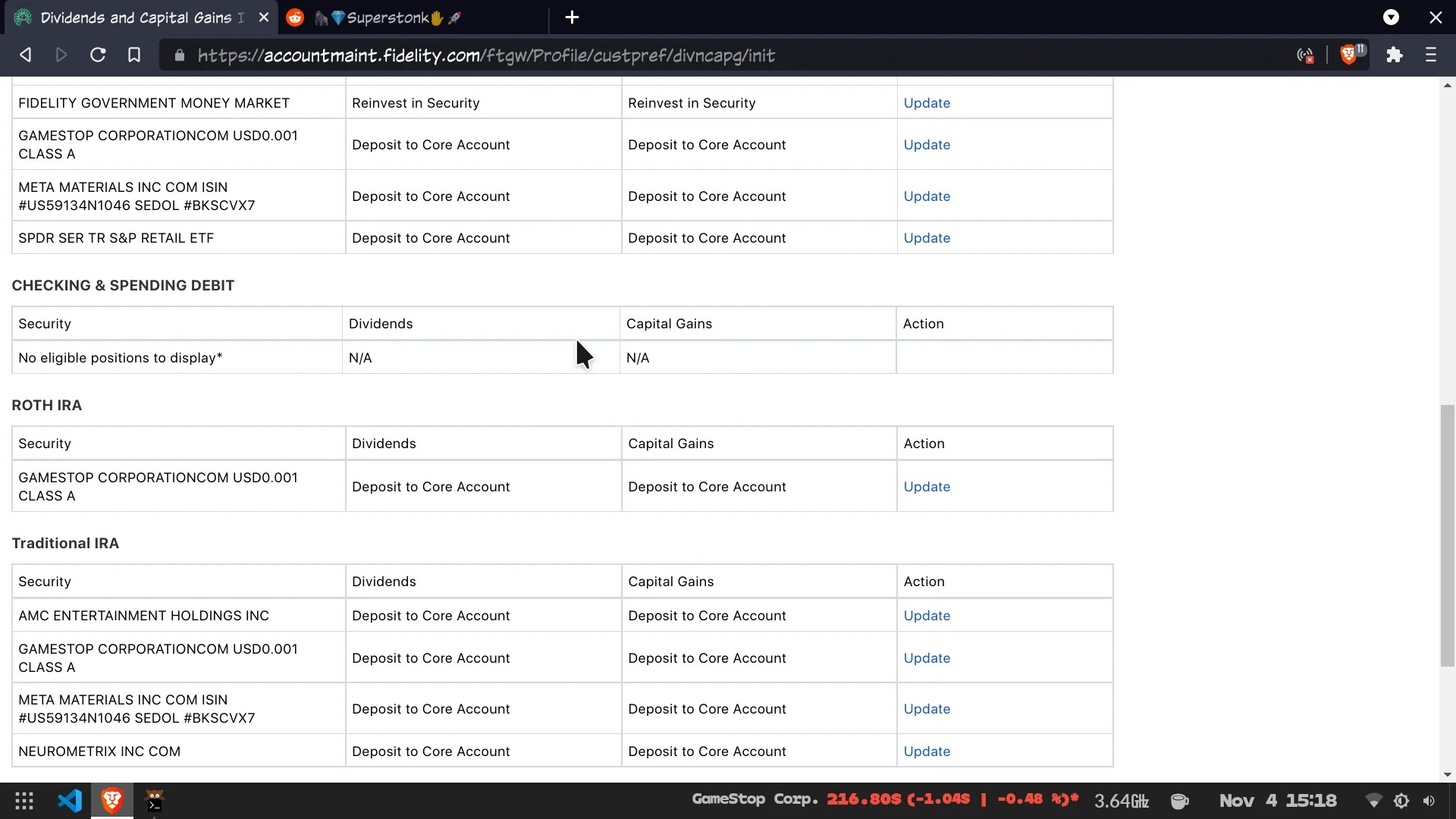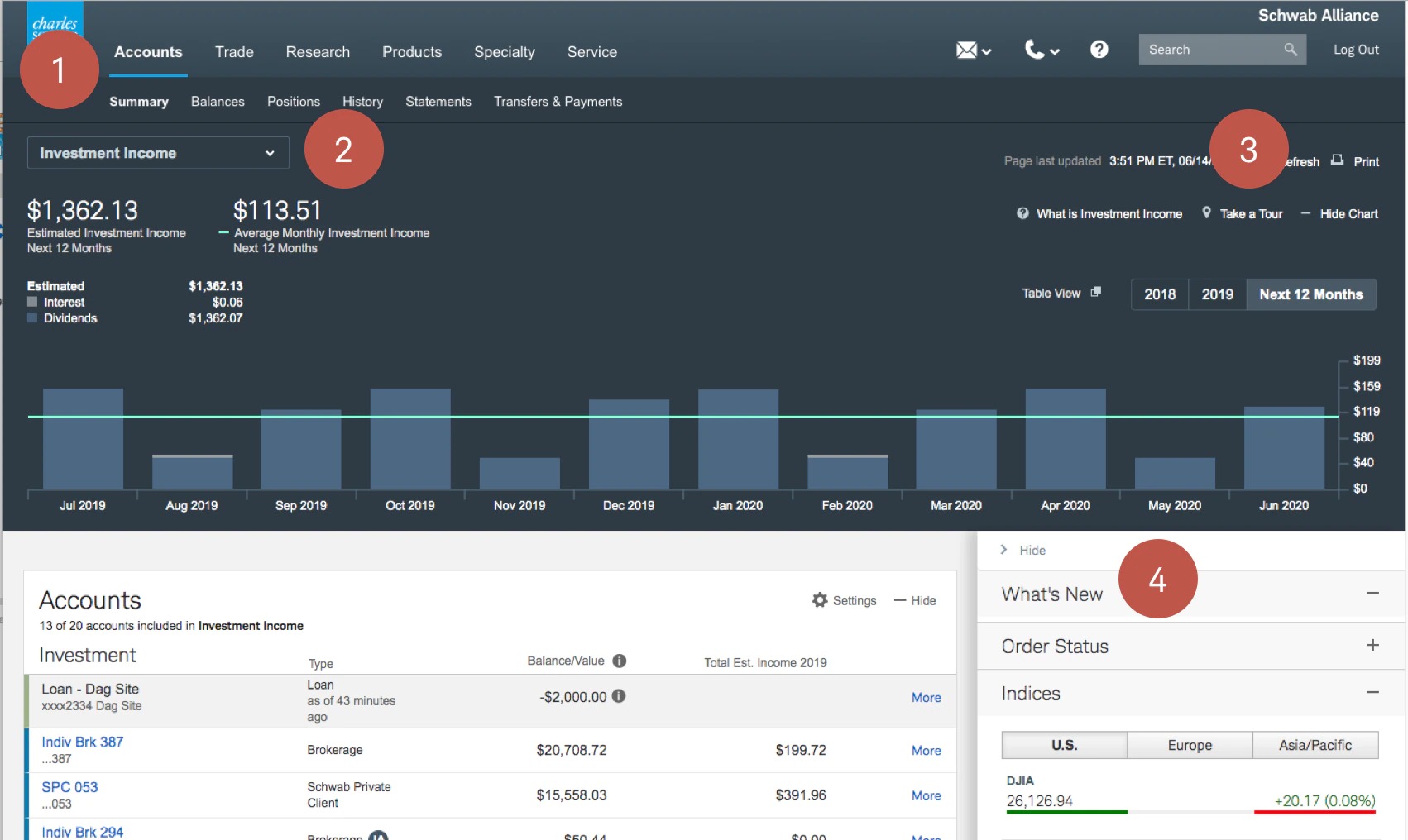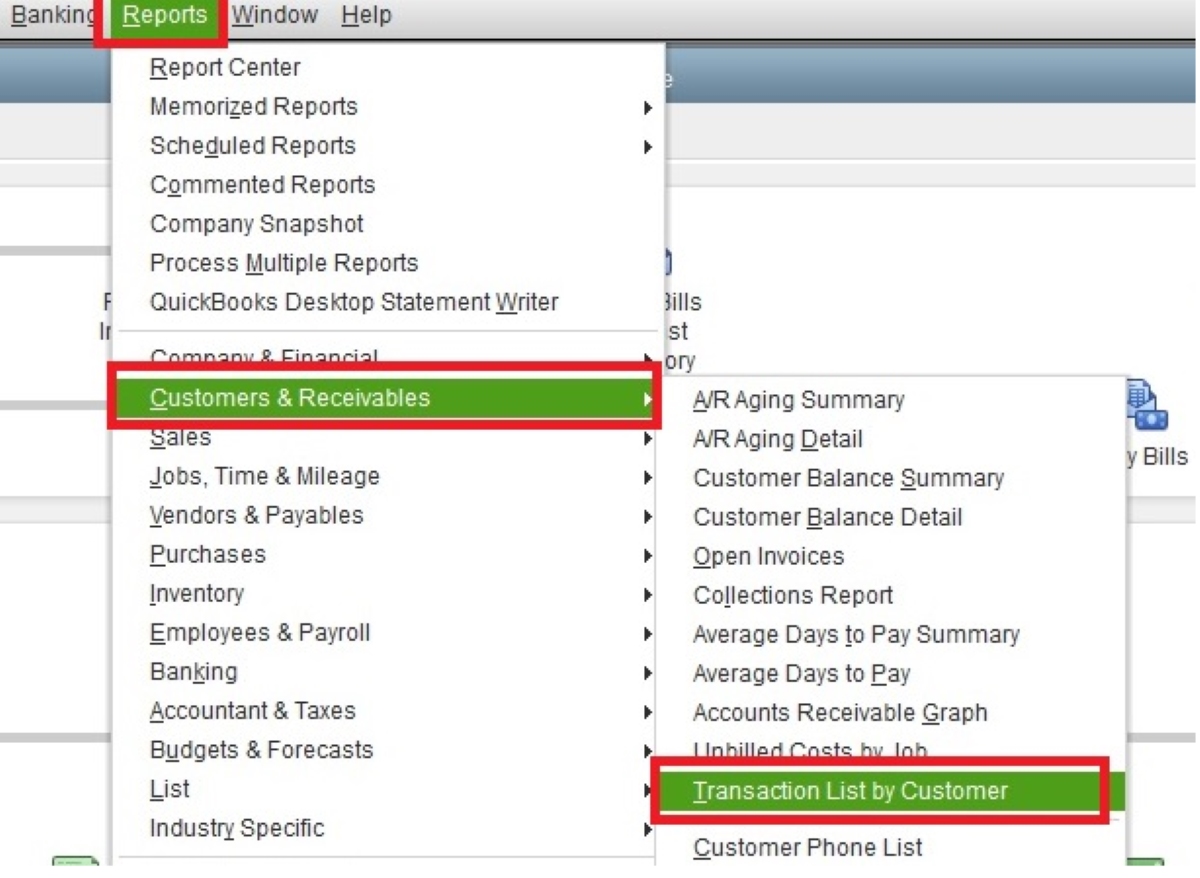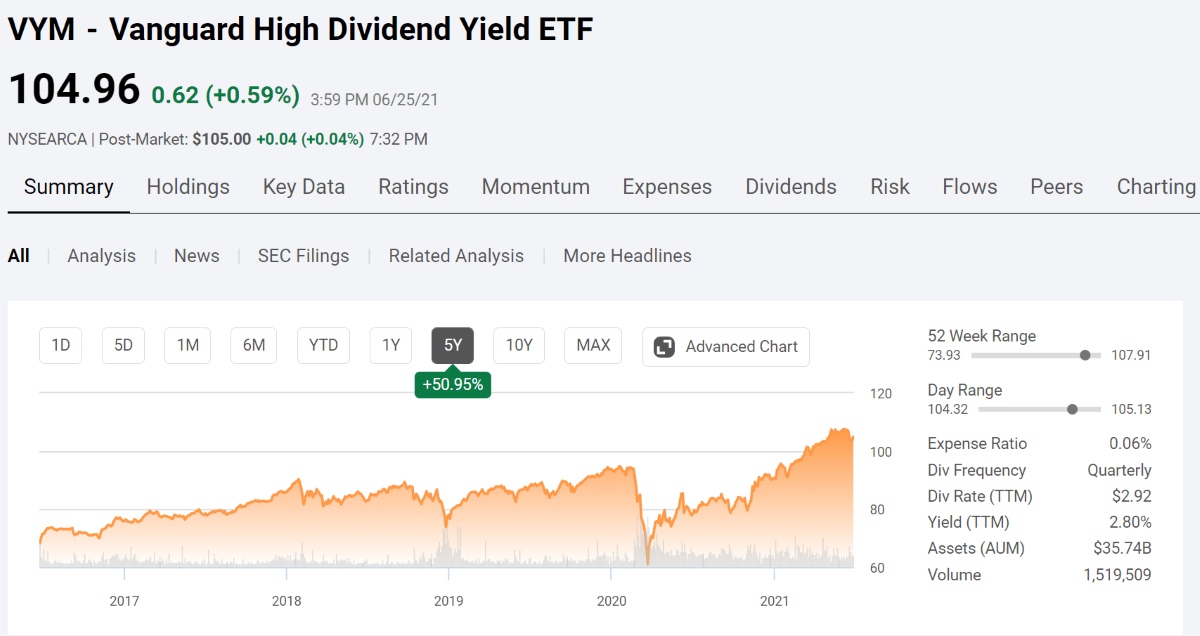

Finance
How To Reinvest Dividends With Vanguard
Published: January 3, 2024
Learn how to reinvest dividends with Vanguard and optimize your financial growth. Discover effective strategies in the field of finance that can help you make the most out of your investments.
(Many of the links in this article redirect to a specific reviewed product. Your purchase of these products through affiliate links helps to generate commission for LiveWell, at no extra cost. Learn more)
Table of Contents
- Introduction
- Understanding Dividends
- Reinvesting Dividends with Vanguard
- Step 1: Setting Up a Vanguard Account
- Step 2: Selecting Dividend-Paying Investments
- Step 3: Enrolling in Vanguard’s Dividend Reinvestment Plan (DRIP)
- Step 4: Managing Your Reinvested Dividends
- Benefits of Reinvesting Dividends with Vanguard
- Potential Drawbacks of Reinvesting Dividends
- Conclusion
Introduction
Investing in dividend-paying stocks can be a lucrative strategy for long-term wealth growth. It allows investors to receive a portion of a company’s profits in the form of regular dividend payments. While many investors choose to cash out these dividends, reinvesting them can potentially yield even greater returns over time. Vanguard, one of the world’s largest investment management companies, offers a convenient way to reinvest dividends through their Dividend Reinvestment Plan (DRIP).
In this article, we will explore how to reinvest dividends with Vanguard, taking you through the steps to set up an account, select dividend-paying investments, enroll in Vanguard’s DRIP program, and manage your reinvested dividends. We will also discuss the benefits and potential drawbacks of reinvesting dividends with Vanguard.
Reinvesting dividends is a powerful strategy that can help investors take advantage of compounding returns. Instead of receiving cash, dividends are automatically used to purchase additional shares of the dividend-paying stock. Over time, this reinvestment can lead to a larger shareholding and increased potential for capital appreciation.
By reinvesting dividends with Vanguard, investors can enjoy the convenience of automatic reinvestment without the need to manually track and reinvest each dividend payment. Vanguard handles all the administrative tasks associated with dividend reinvestment, allowing investors to focus on their long-term financial goals.
However, it’s important to note that dividend reinvestment may not be suitable for everyone. Investors should assess their individual financial goals, risk tolerance, and investment timeline before making the decision to reinvest dividends.
Now, let’s explore the process of reinvesting dividends with Vanguard and discover the benefits it can offer.
Understanding Dividends
Before diving into the process of reinvesting dividends with Vanguard, it’s crucial to understand what dividends are and how they work. Dividends are a distribution of a portion of a company’s earnings to its shareholders. Companies that generate profits often distribute a portion of these profits to their shareholders as a way to reward them for their investment and participation in the company’s success.
Dividends are typically paid out on a regular basis, such as quarterly or annually, although some companies may also offer special dividends on occasion. The amount of the dividend is determined by the company’s board of directors and is usually expressed as a fixed amount per share or as a percentage of the stock’s current price, known as the dividend yield.
When an investor owns shares of a dividend-paying company, they become entitled to receive these dividend payments. Dividends provide a steady stream of income for investors, making them an attractive option for those seeking regular cash flow from their investments.
There are two common types of dividends: cash dividends and stock dividends. Cash dividends are the most straightforward form, where investors receive the dividend payments in the form of cash directly deposited into their brokerage account. On the other hand, stock dividends are paid out in the form of additional shares of the company’s stock. This means that instead of receiving cash, investors receive more shares of the company, effectively increasing their ownership stake.
Dividend-paying stocks are often favored by investors seeking stability and consistent returns. Companies that pay dividends are often well-established and have a track record of generating profits. Dividend payments can provide investors with a steady income stream, which can be particularly beneficial for retired individuals or those looking for passive income.
However, it’s important to note that not all companies pay dividends. Some companies reinvest their profits back into the business for growth or acquisitions, while others may use the funds to pay down debt or repurchase shares. Investing in non-dividend stocks can offer the potential for capital appreciation through stock price appreciation.
Now that we have a solid understanding of dividends, let’s explore how to effectively reinvest them with Vanguard.
Reinvesting Dividends with Vanguard
Vanguard offers a convenient and straightforward process for investors to reinvest their dividends. By following a few simple steps, you can set up automatic dividend reinvestment and maximize the growth potential of your investments.
Step 1: Setting Up a Vanguard Account
The first step is to open a Vanguard account if you don’t already have one. Vanguard provides various types of accounts, such as individual brokerage accounts, IRAs, and 401(k) rollover accounts. Choose the account type that aligns with your investment goals and needs.
Step 2: Selecting Dividend-Paying Investments
Once you have your Vanguard account set up, the next step is to select dividend-paying investments. Vanguard offers a wide range of mutual funds and exchange-traded funds (ETFs) that pay dividends. You can explore their extensive fund lineup and select funds that align with your investment strategy and risk tolerance.
Consider factors such as the fund’s historical performance, expense ratio, and the dividend yield it offers. It’s important to diversify your investments to mitigate risk, so consider spreading your investments across different sectors and asset classes.
Step 3: Enrolling in Vanguard’s Dividend Reinvestment Plan (DRIP)
Once you have chosen the dividend-paying investments, you can enroll in Vanguard’s Dividend Reinvestment Plan (DRIP). The DRIP allows you to automatically reinvest your dividends back into the fund, buying additional shares without incurring transaction fees.
To enroll in the DRIP, simply log in to your Vanguard account and navigate to the “Account Maintenance” section. From there, you can select the specific funds in which you want to reinvest dividends. Follow the prompts to complete the enrollment process.
Step 4: Managing Your Reinvested Dividends
After enrolling in the DRIP, Vanguard will handle the reinvestment of your dividends automatically. Whenever a dividend payment is received, Vanguard will use that amount to purchase additional shares of the fund according to the fund’s prevailing share price at the time of reinvestment.
You can monitor the progress of your investments and see the additional shares acquired through dividend reinvestment in your Vanguard account. Vanguard provides clear and transparent reporting, allowing you to track the performance and growth of your holdings.
It’s worth noting that the dividend reinvestment process occurs at regular intervals, typically on a quarterly basis. This means that the accumulated dividends during this period will be reinvested at once. This helps streamline the process and reduce administrative costs.
By following these steps and enrolling in Vanguard’s DRIP, you can harness the power of automatic dividend reinvestment and potentially accelerate the growth of your investment portfolio.
Step 1: Setting Up a Vanguard Account
The first step towards reinvesting dividends with Vanguard is to open a Vanguard account. If you already have an account, you can skip this step and proceed to the next one.
To begin, visit the Vanguard website and click on the “Open an Account” or “Get Started” button. You will be presented with different account options, such as individual brokerage accounts, IRAs (Individual Retirement Accounts), or 401(k) rollover accounts. Choose the account type that aligns with your investment goals and needs.
To open an account, you will need to provide some personal information, including your name, address, social security number, and employment details. Vanguard takes privacy and security seriously, so you can rest assured that your information will be protected.
During the account setup process, you will also have the opportunity to choose your preferred account features and investment options. Vanguard offers a wide range of investment choices, including mutual funds, ETFs, individual stocks, and more. Consider your investment objectives, risk tolerance, and time horizon when making these decisions.
Once you have completed the application process, you may need to fund your Vanguard account. You can choose to transfer funds from an existing bank account or make a direct deposit. Vanguard provides clear instructions on how to fund your account, ensuring a smooth and seamless process.
Vanguard also offers a mobile app, allowing you to easily manage your account on the go. The app provides access to account information, investment performance, and the ability to make trades or adjustments to your portfolio. It’s a convenient tool for staying on top of your investments and monitoring your dividend reinvestment progress.
By setting up a Vanguard account, you gain access to their robust suite of investment products and services. This lays the foundation for reinvesting your dividends and taking advantage of Vanguard’s dividend reinvestment plan.
Once your account is set up, you can proceed to the next step, which is selecting dividend-paying investments to include in your portfolio.
Step 2: Selecting Dividend-Paying Investments
After setting up your Vanguard account, the next step in reinvesting dividends is to select dividend-paying investments for your portfolio. Vanguard offers a wide range of mutual funds and ETFs that pay dividends to their investors.
When choosing dividend-paying investments, it’s important to consider your investment goals, risk tolerance, and time horizon. Vanguard provides detailed information about each investment option, including historical performance, expense ratios, dividend yields, and more. This allows you to make informed decisions based on your specific investment criteria.
Vanguard offers both actively managed funds and index funds, providing investors with various strategies to choose from. Actively managed funds are overseen by professional portfolio managers who actively make investment decisions to outperform the market. Index funds, on the other hand, aim to replicate the performance of a specific index, such as the S&P 500, by holding a diversified portfolio of the index’s constituent stocks.
When selecting dividend-paying investments, it’s important to consider the following factors:
- Dividend Yield: This is the annual dividend payment expressed as a percentage of the investment’s price. Higher dividend yields can indicate higher income potential, but it’s important to assess the sustainability of the dividends and the overall financial health of the companies.
- Expense Ratio: This is the annual fee charged by the fund for managing your investments. Lower expense ratios mean more of your investment returns remain in your pocket.
- Historical Performance: While past performance doesn’t guarantee future results, reviewing a fund’s track record can provide insights into its consistency and performance relative to its benchmarks.
- Asset Allocation: Consider the diversification aspect of your portfolio by selecting funds across different asset classes, such as stocks, bonds, and international investments. Diversification helps mitigate risk by spreading investments across various sectors and geographic regions.
It’s important to remember that selecting dividend-paying investments should align with your overall investment strategy and financial goals. If you’re unsure about which investments to choose, Vanguard offers tools and resources to help you make informed decisions. Their experienced team of advisors can provide personalized guidance based on your specific needs and preferences.
Once you have selected the dividend-paying investments for your Vanguard portfolio, you are ready to move on to the next step: enrolling in Vanguard’s Dividend Reinvestment Plan (DRIP) to automatically reinvest your dividends.
Step 3: Enrolling in Vanguard’s Dividend Reinvestment Plan (DRIP)
After selecting dividend-paying investments for your Vanguard portfolio, the next step is to enroll in Vanguard’s Dividend Reinvestment Plan (DRIP). The DRIP allows you to automatically reinvest your dividends back into the same investment, buying additional shares without incurring transaction fees.
Enrolling in Vanguard’s DRIP is a straightforward process that can be completed online. Here’s how:
- Log in to your Vanguard account: Visit the Vanguard website and log in to your account using your username and password.
- Navigate to the “Account Maintenance” section: Once logged in, go to the account dashboard and find the “Account Maintenance” or a similar section. This is where you can access and manage various account features.
- Select the funds to enroll in the DRIP: Within the “Account Maintenance” section, look for the option to manage your dividend reinvestment preferences. You will find a list of eligible funds in which you can choose to participate in the DRIP. Select the funds you want to enroll.
- Review and confirm: Carefully review your selections and ensure that you are enrolling the correct funds in the DRIP. Once you are confident with your choices, confirm your enrollment.
- Monitor your dividend reinvestment: After enrolling in Vanguard’s DRIP, Vanguard will handle the reinvestment of your dividends automatically. Whenever a dividend payment is received, Vanguard will use that amount to purchase additional shares of the fund according to the prevailing share price at the time of reinvestment.
It’s worth noting that the dividend reinvestment process typically occurs at regular intervals, such as quarterly. This means that the accumulated dividends during this period will be reinvested at once. Consolidating the reinvestment of dividends helps streamline the process and reduce administrative costs.
By enrolling in Vanguard’s DRIP, you can take advantage of automatic dividend reinvestment without any additional effort or fees. This allows you to harness the power of compounding returns and potentially accelerate the growth of your investment portfolio over time.
It’s important to note that the DRIP is not available for all funds offered by Vanguard. Some funds may have specific eligibility criteria or restrictions. Ensure you review the fund details and prospectus to determine if the DRIP is available for your chosen investments.
Now that you have successfully enrolled in Vanguard’s DRIP, you can move on to the next step, which involves monitoring and managing your reinvested dividends.
Step 4: Managing Your Reinvested Dividends
Once you have enrolled in Vanguard’s Dividend Reinvestment Plan (DRIP), the next step is to effectively manage your reinvested dividends. Vanguard provides various tools and resources to help you monitor and track the progress of your investments.
Here are some key aspects to consider when managing your reinvested dividends:
- Monitoring your account: Vanguard offers a user-friendly online platform and mobile app that allows you to easily access your account information. Log in to your Vanguard account regularly to check the status of your investments, review your dividend reinvestment transactions, and track the growth of your reinvested dividends.
- Understanding your statements: Vanguard provides detailed account statements, including information on dividend reinvestment transactions. Review your statements regularly to ensure accuracy and to keep track of the additional shares acquired through reinvestment.
- Rebalancing your portfolio: Over time, your portfolio may become unbalanced due to the varying performance of different investments. Consider periodically rebalancing your portfolio by adjusting your allocation to maintain your desired risk profile and investment strategy. Vanguard offers tools and guidance for portfolio rebalancing.
- Tax considerations: Reinvested dividends are generally subject to taxes, even though you did not receive them as cash. Vanguard provides tax statements and resources to help you navigate the tax implications of dividend reinvestment. Consult with a tax advisor for personalized tax advice.
- Periodic portfolio reviews: Regularly review your investment portfolio to assess its performance, evaluate whether your investment objectives have changed, and make any necessary adjustments. Vanguard offers investment advisory services that can provide personalized recommendations based on your unique financial goals and risk tolerance.
By actively managing your reinvested dividends, you can stay informed about the progress of your investments and make informed decisions to optimize your portfolio’s performance.
It’s important to keep in mind that investing involves risks, and the value of your investments can fluctuate. The past performance of investments does not guarantee future results. Consider your own investment goals, risk tolerance, and time horizon when making investment decisions.
Vanguard has a wealth of educational resources, including articles, webinars, and market insights, that provide valuable information and guidance to help you make informed investment decisions. Take advantage of these resources to enhance your knowledge and stay updated on investment trends and strategies.
By effectively managing your reinvested dividends with Vanguard, you can harness the power of compounding returns and potentially achieve long-term financial growth.
Now, with an understanding of how to manage your reinvested dividends, you are well-equipped to reap the benefits of dividend reinvestment with Vanguard.
Benefits of Reinvesting Dividends with Vanguard
Reinvesting dividends with Vanguard offers several advantages that can enhance your investment strategy and contribute to long-term financial growth. Here are some key benefits of reinvesting dividends with Vanguard:
1. Compounding Returns:
Reinvesting dividends allows you to take advantage of compounding returns. By automatically reinvesting your dividend payments, you can buy additional shares of the same investment. Over time, these reinvested dividends can generate their own dividends, leading to a compounding effect that can potentially accelerate the growth of your investment portfolio.
2. Automatic and Convenient:
Vanguard’s Dividend Reinvestment Plan (DRIP) eliminates the hassle of manually reinvesting each dividend payment. Once you have enrolled in the program, Vanguard takes care of the process for you. The dividends are automatically reinvested into the same investment, saving you time and effort. This convenience allows you to stay focused on your long-term financial goals.
3. Cost-Effective:
Vanguard offers dividend reinvestment without incurring transaction fees. This means you can reinvest your dividends without worrying about additional costs eating into your returns. It allows you to maximize the amount of money working for you, ultimately increasing your potential for higher investment growth over time.
4. Diversification:
By reinvesting dividends with Vanguard, you can effectively diversify your investment portfolio. Vanguard offers a wide range of dividend-paying mutual funds and ETFs across various sectors, asset classes, and geographic regions. Reinvesting dividends into different funds helps spread your investments and reduce concentration risk, providing you with a balanced and diversified portfolio.
5. Passive Income:
Reinvesting dividends can serve as a source of passive income. By automatically reinvesting your dividends, your investment grows without requiring any additional effort on your part. This can be particularly beneficial for individuals seeking regular cash flow or those planning for retirement, as it provides a consistent stream of income that can be reinvested or used for other financial goals.
6. Potential for Long-Term Growth:
Reinvesting dividends with Vanguard can potentially lead to significant long-term growth. By harnessing the power of compounding returns and staying invested in quality dividend-paying investments, you increase your chances of capital appreciation. Over time, the reinvested dividends contribute to a larger shareholding, which in turn increases the potential for future dividend payments and capital gains.
It’s important to note that while reinvesting dividends can offer numerous benefits, it is essential to consider your individual financial goals, risk tolerance, and investment strategy. It’s always a good idea to consult with a financial advisor or do thorough research before making any investment decisions.
Reinvesting dividends with Vanguard provides a convenient and cost-effective way to grow your investment portfolio over the long term. By taking advantage of compounding returns and diversification, you can potentially achieve your financial objectives while enjoying the convenience of automatic dividend reinvestment.
Potential Drawbacks of Reinvesting Dividends
While reinvesting dividends with Vanguard has its benefits, it’s important to consider potential drawbacks as well. Understanding these drawbacks will help you make informed decisions about your investment strategy. Here are some potential drawbacks to consider:
1. Tax Implications:
Reinvested dividends are generally subject to taxes, even though you didn’t receive them as cash. The reinvested dividends add to your cost basis, which affects the amount of capital gains tax you may owe when you sell the investment in the future. It’s essential to understand and plan for the tax implications involved in reinvesting dividends, and consult with a tax advisor to navigate the complexities of the tax code.
2. Lack of Flexibility:
Reinvesting dividends means your funds are automatically reinvested back into the same investment. While this can be advantageous for long-term growth, it also means you have limited control over how the dividends are allocated. If you prefer to have more flexibility in managing your cash flow or strategically allocating funds to other investments, reinvesting dividends might not align with your preferences or financial needs.
3. Market Volatility:
Investing in dividend-paying stocks or funds does not make them immune to market volatility. The value of your investment can still fluctuate, and if the market experiences significant downturns, reinvesting dividends may result in buying more shares at higher prices, potentially lowering your overall return on investment. It’s important to understand the risks associated with the specific dividend-paying investments you select and maintain a diversified portfolio to mitigate market volatility.
4. Limited Income Stream:
Reinvesting dividends means you forgo the immediate cash flow that could be utilized for other purposes, such as paying bills or expenses. If you rely on regular dividend income to cover living expenses or have short-term financial goals, reinvesting dividends may not align with your immediate income needs. In such cases, receiving dividends as cash instead of reinvesting them might be a more suitable option.
5. Single Investment Focus:
Reinvesting dividends can result in an increased concentration of your investments in a single stock or fund. If you have a significant portion of your portfolio allocated to a single investment, there is heightened risk associated with the performance of that particular stock or fund. If the investment underperforms or faces financial difficulties, it can have a larger impact on your overall portfolio. Diversification is important to mitigate this risk, and investors should regularly review their holdings to ensure their portfolios are well-balanced.
It’s crucial to evaluate these potential drawbacks in the context of your individual financial situation and investment goals. Consider consulting with a financial advisor who can provide personalized guidance based on your specific needs and preferences. By taking a comprehensive approach to your investment strategy, you can mitigate potential drawbacks and make informed decisions to optimize your financial growth.
Conclusion
Reinvesting dividends with Vanguard offers investors a convenient and potentially rewarding strategy for long-term financial growth. By following the steps outlined in this guide, you can effectively reinvest your dividends and take advantage of the compounding returns and other benefits that Vanguard provides.
Understanding dividends and how they work is fundamental to implementing a successful dividend reinvestment plan. Dividends provide investors with a steady income stream and can be reinvested to potentially accelerate the growth of their investment portfolios. Vanguard’s Dividend Reinvestment Plan (DRIP) simplifies the process by automatically reinvesting your dividends into the same investment, saving you time and effort.
Through Vanguard’s wide range of investment options, including mutual funds and ETFs, you can select dividend-paying investments that align with your investment goals and risk tolerance. Diversification across different sectors and asset classes is important to mitigate risk and optimize portfolio performance.
Managing your reinvested dividends involves regularly monitoring your account, reviewing statements, and considering factors such as tax implications and portfolio rebalancing. Vanguard’s online platform and mobile app make it easy to access and track your investment portfolio, allowing you to stay informed and make informed decisions.
While there are potential drawbacks to consider, such as tax implications and limited flexibility, weighing these factors against the potential benefits is crucial in determining whether dividend reinvestment with Vanguard is the right strategy for you.
In conclusion, reinvesting dividends with Vanguard can be a powerful tool for long-term financial growth. It offers convenience, cost-effectiveness, and the potential for compounding returns. However, it’s essential to evaluate your individual financial goals, risk tolerance, and investment strategy before committing to dividend reinvestment. Consider consulting with a financial advisor to develop a well-rounded investment plan.
By harnessing the power of dividend reinvestment and leveraging Vanguard’s expertise and resources, you can take significant steps towards achieving your financial goals and building a strong investment portfolio.





